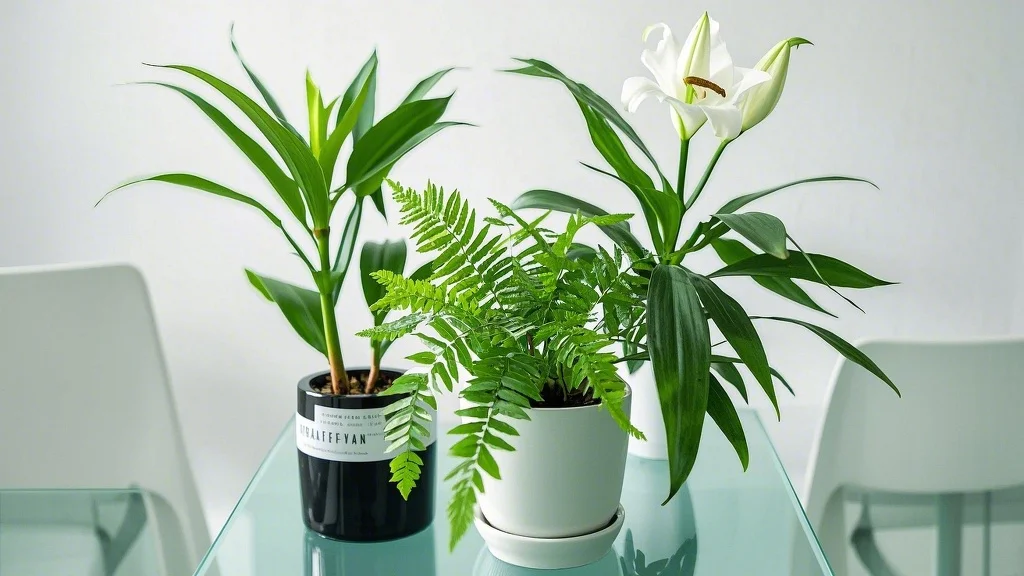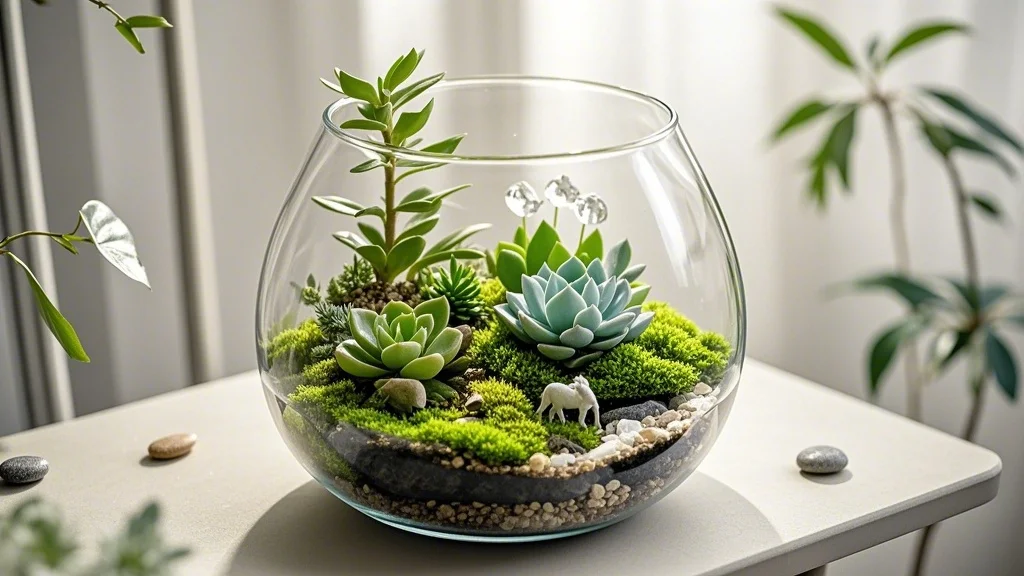The average office worker spends approximately 40 hours per week indoors, often in environments with limited ventilation and potentially poor air quality. From volatile organic compounds (VOCs) emitted by office furniture and equipment to carbon dioxide buildup in meeting rooms, workplace air can significantly impact employee health, cognitive function, and overall productivity.
Introducing air-purifying plants to your workspace offers a natural, aesthetically pleasing solution to improve air quality while creating a more vibrant, stress-reducing environment. NASA’s Clean Air Study, conducted in the late 1980s, identified several plant species effective at filtering common indoor pollutants, and subsequent research has reinforced the benefits of strategic indoor planting.
In this comprehensive guide, we’ll explore the most effective air-purifying plants for office environments, their specific benefits, care requirements, and optimal placement to maximize their air-cleaning potential.
Contents
- 1 Why Office Air Quality Matters
- 2 Top Air-Purifying Plants for Office Environments
- 2.1 1. Snake Plant (Sansevieria trifasciata)
- 2.2 2. Peace Lily (Spathiphyllum)
- 2.3 3. Spider Plant (Chlorophytum comosum)
- 2.4 4. Boston Fern (Nephrolepis exaltata)
- 2.5 5. Rubber Plant (Ficus elastica)
- 2.6 6. Pothos (Epipremnum aureum)
- 2.7 7. ZZ Plant (Zamioculcas zamiifolia)
- 2.8 8. Dracaena (Various species)
- 3 Strategic Placement for Maximum Benefit
- 4 Caring for Office Plants: Practical Considerations
- 5 Beyond Air Purification: Additional Benefits
- 6 Common Challenges and Solutions
- 7 Getting Started: Implementation Plan
- 8 Conclusion
Why Office Air Quality Matters
Before diving into plant recommendations, it’s important to understand what makes office air quality a concern:
- VOCs (Volatile Organic Compounds): Released by office furniture, carpeting, paint, printers, and cleaning products
- Particulate matter: Dust, allergens, and microparticles that can irritate respiratory systems
- Carbon dioxide: Builds up in poorly ventilated meeting rooms, leading to drowsiness and reduced cognitive function
- Bacteria and mold spores: Can circulate through HVAC systems
Poor air quality contributes to “sick building syndrome,” with symptoms including headaches, fatigue, respiratory irritation, and decreased concentration. Studies show that improving indoor air quality can boost productivity by 8-11% while reducing sick days.
Top Air-Purifying Plants for Office Environments

1. Snake Plant (Sansevieria trifasciata)
Pollutants removed: Formaldehyde, benzene, xylene, trichloroethylene, toluene
Why it’s perfect for offices:
- Extremely low-maintenance and drought-tolerant
- Thrives in low light conditions
- Releases oxygen at night, unlike most plants
- Striking vertical growth fits well in tight spaces
Care requirements:
- Water: Allow soil to dry completely between waterings (typically every 2-6 weeks)
- Light: Tolerates low light but grows faster in indirect bright light
- Temperature: 65-85°F (18-29°C)
- Special considerations: Prone to root rot if overwatered; perfect for offices that close on weekends
2. Peace Lily (Spathiphyllum)
Pollutants removed: Formaldehyde, benzene, trichloroethylene, ammonia, xylene, toluene
Why it’s perfect for offices:
- One of the most effective air purifiers
- Elegant white flowers add visual interest
- Excellent humidity booster for dry office environments
- Dramatic drooping when thirsty makes watering schedule obvious
Care requirements:
- Water: Keep soil consistently moist but not soggy; water when top inch is dry
- Light: Thrives in low to medium indirect light
- Temperature: 65-85°F (18-29°C)
- Special considerations: Toxic to pets if ingested; consider placement if pets visit the office
3. Spider Plant (Chlorophytum comosum)
Pollutants removed: Formaldehyde, xylene, carbon monoxide
Why it’s perfect for offices:
- Extremely adaptable and hard to kill
- Produces “spiderettes” that can be propagated for more plants
- Safe for pets and humans
- Looks great in hanging planters to save desk space
Care requirements:
- Water: Allow top inch of soil to dry between waterings
- Light: Thrives in indirect light; avoid direct sunlight
- Temperature: 65-75°F (18-24°C)
- Special considerations: Brown tips may indicate fluoride in tap water; consider using filtered water
4. Boston Fern (Nephrolepis exaltata)
Pollutants removed: Formaldehyde, xylene, toluene
Why it’s perfect for offices:
- Natural humidifier, adding moisture to dry office air
- Lush, vibrant appearance creates a calming atmosphere
- Excellent for placing on cabinets or in hanging baskets
Care requirements:
- Water: Keep soil consistently moist; mist regularly in dry environments
- Light: Bright, indirect light
- Temperature: 65-75°F (18-24°C)
- Special considerations: Higher maintenance than other options; best for offices with dedicated plant caretakers
5. Rubber Plant (Ficus elastica)
Pollutants removed: Formaldehyde, bacteria, mold spores
Why it’s perfect for offices:
- Grows into an impressive statement plant
- Glossy leaves are dust-resistant and easy to clean
- Tolerates inconsistent watering and varying light conditions
Care requirements:
- Water: Allow top 2 inches of soil to dry between waterings
- Light: Medium to bright indirect light
- Temperature: 60-80°F (15-27°C)
- Special considerations: Wipe leaves occasionally to maintain maximum air-purifying efficiency
6. Pothos (Epipremnum aureum)
Pollutants removed: Formaldehyde, benzene, carbon monoxide, xylene
Why it’s perfect for offices:
- Nearly indestructible; thrives on neglect
- Trailing vines can be trained along shelves or walls
- Available in various patterns (golden, marble queen, neon)
- Grows well under fluorescent lighting
Care requirements:
- Water: Allow soil to dry between waterings
- Light: Adaptable to low light, though variegated varieties need brighter conditions
- Temperature: 65-85°F (18-29°C)
- Special considerations: Toxic if ingested; keep away from office pets
7. ZZ Plant (Zamioculcas zamiifolia)
Pollutants removed: Xylene, toluene, benzene
Why it’s perfect for offices:
- Extremely drought-tolerant; perfect for offices with irregular watering
- Glossy, waxy leaves resist dust and stay attractive with minimal care
- Thrives in artificial light conditions
- Modern, architectural appearance
Care requirements:
- Water: Allow to dry completely between waterings (every 2-3 weeks or longer)
- Light: Tolerates low light to bright indirect light
- Temperature: 65-85°F (18-29°C)
- Special considerations: Toxic if ingested; slow-growing but very long-lived
8. Dracaena (Various species)
Pollutants removed: Formaldehyde, benzene, trichloroethylene, xylene
Why it’s perfect for offices:
- Available in multiple varieties with differentaena fragrans, etc.)
- Vertical growth habit maximizes air purification in minimal floor space
- Adapts well to office lighting conditions
- Long-lived with proper care
Care requirements:
- Water: Allow top inch of soil to dry between waterings
- Light: Medium to bright indirect light
- Temperature: 65-80°F (18-27°C)
- Special considerations: Sensitive to fluoride in tap water; use filtered water if possible
Strategic Placement for Maximum Benefit

The location of your air-purifying plants significantly impacts their effectiveness:
- Near electronics: Place plants like Snake Plants or Pothos near printers, computers, and other equipment that emit VOCs and ozone.
- Meeting rooms: Boston Ferns and Peace Lilies help combat CO2 buildup and improve humidity in spaces where people gather.
- Personal workspaces: Smaller plants like Spider Plants on desks can create a personal clean-air zone while boosting mood and productivity.
- Entrance areas: Rubber Plants and ZZ Plants in reception areas make a positive first impression while filtering pollutants from outside.
- Breakrooms: Dracaenas can help neutralize food odors while providing air-cleaning benefits.
For maximum air purification, aim for approximately one medium-sized plant (10-12 inch pot) per 100 square feet of office space.
Caring for Office Plants: Practical Considerations
Maintaining healthy plants in an office environment presents unique challenges:
Watering Solutions
- Self-watering planters: Ideal for offices where regular watering is difficult
- Water reminder apps: Set scheduled alerts for different plants’ needs
- Watering rotation: Establish a team calendar for shared plant care responsibilities
- Moisture meters: Inexpensive tools that take the guesswork out of watering needs
Light Considerations
- Light meters: Smartphone apps can measure available light to determine suitable plant locations
- Supplemental lighting: Consider grow lights for plants in windowless areas
- Seasonal adjustments: Rotate plants seasonally as light conditions change
- Light-reflecting surfaces: White walls or mirrors can help maximize available light
Weekend and Holiday Care
- Grouping strategy: Place Watering thoroughly: Give plants a good soak before weekends or holidays
- Capillary mats: These special mats hold water that plants can draw from as needed
- Temporary relocation: Move plants away from heating/cooling vents during extended breaks
Beyond Air Purification: Additional Benefits
While improved air quality is the primary focus, office plants offer numerous additional benefits:
Productivity and Cognitive Function
Research from the University of Exeter found that introducing plants to office environments increased productivity by 15%. Plants help improve concentration, memory, and creative problem-solving.
Stress Reduction
Studies show that viewing plants can lower blood pressure and reduce stress hormones. Even brief exposure to greenery can provide mental restoration during demanding workdays.
Noise Reduction
Plants with large, thick leaves (like Rubber Plants and Peace Lilies) can absorb and diffuse background noise in open office layouts, reducing acoustic distractions.
Biophilic Design Elements
Plants satisfy our innate connection to nature (biophilia), making workspaces more appealing and potentially reducing absenteeism.
Common Challenges and Solutions
Challenge: Inconsistent Care
Solution: Create a shared calendar for plant maintenance tasks or invest in self-watering systems.
Challenge: Limited Natural Light
Solution: Choose low-light tolerant species like Snake Plants and ZZ Plants, or supplement with grow lights.
Challenge: Temperature Fluctuations
Solution: Keep plants away from drafts, vents, and exterior doors; choose resilient species like Pothos and Dracaena.
Challenge: Pest Management
Solution: Regularly inspect plants, especially new additions; use non-toxic solutions like neem oil for treatment.
Challenge: Space Constraints
Solution: Utilize vertical space with hanging plants, wall planters, or tall, columnar species.
Getting Started: Implementation Plan
- Assess your space: Identify light levels, available surfaces, and problem areas with poor air quality.
- Start small: Begin with 2-3 highly resilient plants like Snake Plants and Pothos.
- Create a care schedule: Establish clear responsibilities for watering and maintenance.
- Monitor and adjust:ate as needed.
- Expand gradually: Add different species as you become comfortable with plant care.
Conclusion
Incorporating air-purifying plants into your office environment represents one of the most cost-effective, aesthetically pleasing ways to improve workplace air quality. Beyond their practical benefits of filtering toxins and releasing oxygen, these green colleagues contribute to a more productive, creative, and psychologically supportive work environment.
By selecting appropriate species for your specific office conditions and implementing consistent care routines, you can create a healthier, more vibrant workplace that benefits both air quality and employee wellbeing. Start with a few resilient varieties and watch as your office transforms into a cleaner, more inspiring space for everyone.
Whether you’re a workplace manager looking to improve office conditions or an employee seeking to enhance your personal workspace, these natural air purifiers offer an accessible solution with benefits that extend far beyond clean air. Remember: The most effective air-purifying plant is one that thrives in your specific office conditions. Choose plants that match your maintenance capabilities and environment for sustainable success.








